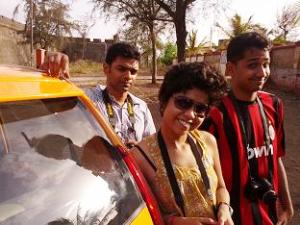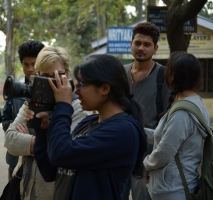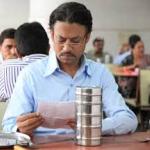On Ray’s 92nd birthday this May, I posted on Facebook that we all have a favourite Ray movie – what’s yours, thinking that it was one of those virtual FB question that brings in hits such as “27 likes” and perhaps “4 comments”. I was surprised to note the immediate connect and that so many friends responded – young and not so young. When I received a request to write this piece from the editor I decided that it was going to be one of those informal personalized pieces on Satyajit Ray and his cinema. Realms have been written and continue to be by pundits who have more or less covered ever aspect of the maestro’s cinema. But the question which emerges and re-emerges is how far his kind of cinema is relevant in today’s times?
For someone who was taken from early childhood to a Ray film each time it was released, I interpreted these as family rituals till I saw these later again and was never disappointed. To begin with, Ray made his films when times were still a little less complicated and it wasn’t yet a digitalized world, technologically driven but yet, his films stand out for the humanistic appeal. When we talk about the relevance of Ray’s cinema I plan to view this from mainly three angles – political, sociological and gender. Ray’s films are considered classics because of their timelessness quality. Classics are never out of relevance. Whether it is literature or cinema, their appeal is forever; we hold them dear to our hearts irrespective of the message, if at all. The same way we do, say Kurosawa‘s Roshomon or De Sica’s Bicycle Thief. And classics endure because the way a story is told adds to their charm.
Ray made the complex so very simple adhering to the language of pure cinema; a trait he well imbibed from British and western film masters whose film he avidly followed and had the opportunity to be posted in the United Kingdom during his initial career with advertising. Unlike Mrinal Sen, Ray does not come across as someone who was overtly political. But yes, films like Goopy Gayne Bagha Byne and Hirak Rajar Deshe are veiled comments on the misplaced priorities of those who rule us or who are in power.
Or take films like Pratidwandi and Jana Aranya which were made during very politically turbulent periods in West Bengal (early 70’s) that had their fallout in political violence, unrest, economic un-productivity, acute unemployment and general decadence all around.
Ray films have not lost their relevance though very few Bengali filmmakers really have learnt anything from him and continue to make movies which are so very different from his. They only keep paying tributes but hardly reflect the lyrical, poignant and understated aspects of his filmmaking which hit at the very core of humanity. This humanism brings in an immediate connect all over the world even if his subjects lived in remote villages in a place called Bengal in India or a city called Calcutta.
Toward this, Ray picked on great literature of his times – from Rabindranath Tagore to a contemporary writer Sunil Gangopadhyaya when not raiding his own rich family heritage of writers – grandfather Upendra Kishore Ray Chaudhuri or even himself.
In his Feluda series Sonar Kella stands out as an astounding children’s film. The superbly mounted shots, the eye for rich details and the overall perfectionism make these delightful to watch and enjoy still. Some of my favourite ones are the last shot when the sun breaks out over the misty peaks of Kanchanjunga putting an end to doubts and confusion of matters of love and the heart. The feel of which is captured in the last few lines of Kiran Desai’s Booker winning novel The Inheritance of Loss when a father and son meet. In Mahanagar, the housewife from a lower-middle class household takes up work to supplement the family income and when she quits to defend her Anglo-Indian colleague (and for the barbed comments she has to endure from her family), her husband asks her to not give it as he has lost his bank job. But she does and as both husband and wife look out to the great city viewed from one of the high rise office building in the business district with the teeming millions scurrying across for a living, they reinforce hope that some new opportunity will turn up again.
When hope is dead everything is! The film has shades of “A Doll’s House” in a certain way and though critic Pauline Kael does not consider it as one of Ray’s greats, she wrote, “The film does what it sets out to do, and it's perceptive and revealing; it stays with one.” For me, the sensitive portrayal of the Anglo-Indian girl stays with me.
We find glimpses of the tattered pride of the last of the feudal in Jalsaghar when he encounters the crassness of the nouveau riche if we care to look around today when society is at a churn, with old world order/values giving way to new. New values help us cope with a new world but an amount of erosion of values always takes place in transition is something we must realize.
The sociological aspect of the two world – the urban and rural separated by the chasm of progress is brought to the fore with the film Aranayer Din Ratri where four friends leave civilization behind for a tryst with the other side, finally returning highly chastised. Gender too has been dealt in a very sensitive way, time and again, from Charulata to Ghaire Baire in which the men too have been objectively portrayed and not simply in black and white.
So each and every film of Ray raises questions, stimulates and entertains. Deconstruct them if you will but their relevance continues with their “depth” and the “creative imagery” of his world vision, aided by a great team of actors, cameramen and other technicians.
Find us on facebook: facebook.com/TheThumbPrintMag







































